Widespread throughout Buddhist communities worldwide, the practice involves “freeing” hundreds of millions of animals every year.
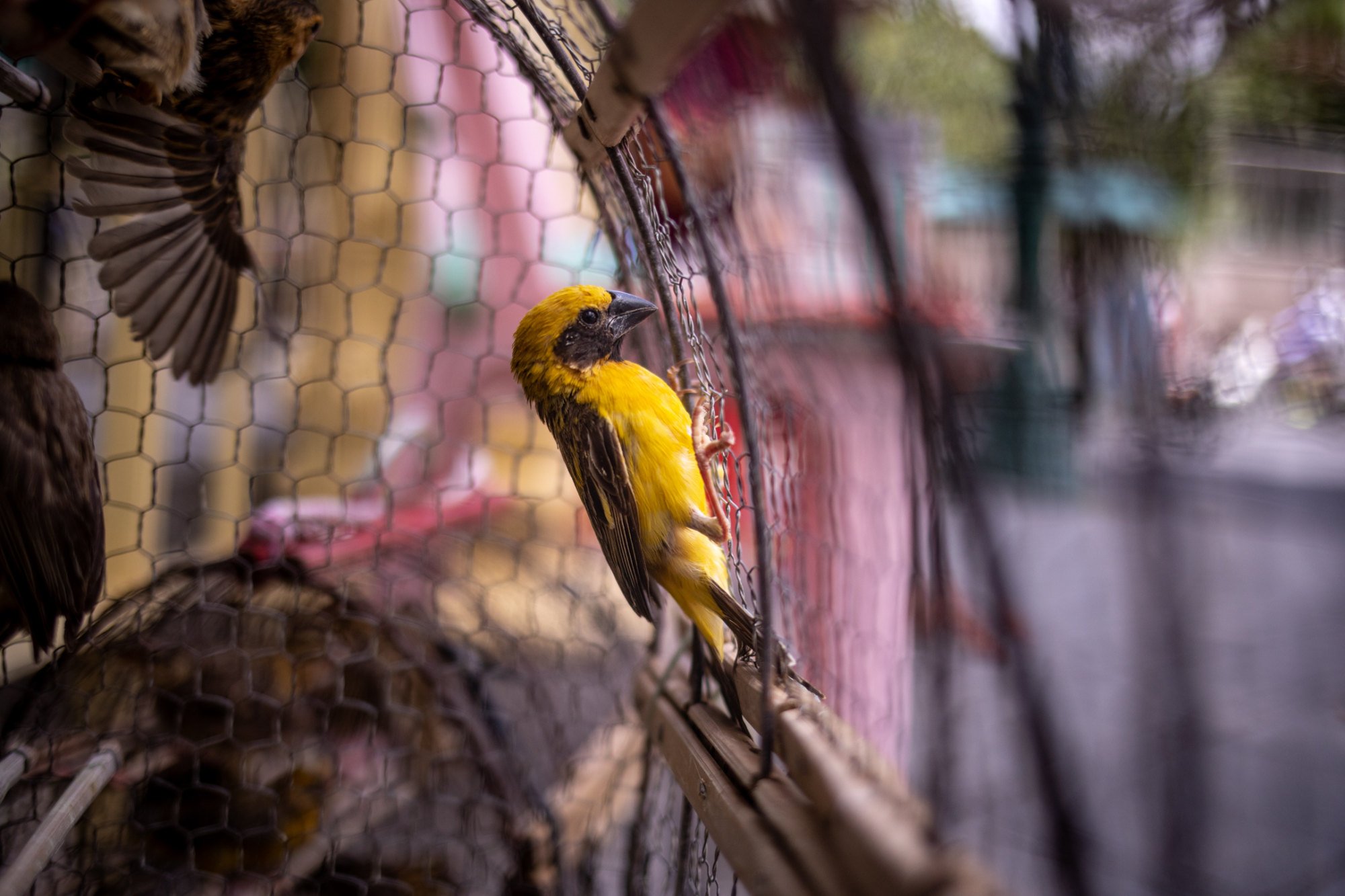
Here in Cambodia, nine out of 10 people say they practise life release. But for a ritual of freedom meant to earn spiritual points, there sure are a lot of animals suffering in the process.
Even in the Liezi, an ancient Chinese text dating back to at least the 3rd century AD, a minister is “delighted” to be given doves to release on New Year’s Day as a gesture of kindness, yet a visitor is quick to point out that “the people know you wish to release them, so they vie with each other to catch them, and many of the doves die”.
Bali’s wild birds are disappearing as they are poached and sold across Asia
Bali’s wild birds are disappearing as they are poached and sold across Asia
Dr Kit Magellan, an independent behavioural and invasion ecologist who led a 2019 study of life release across Cambodia and Vietnam, recalls witnessing people violently shaking a cage upside down to “free” the last bird.
“It eventually flew out of the cage and dropped on the ground a metre away,” she says. “People saw it and laughed.”
Elsewhere in the city, over a patch of grass tucked between nondescript buildings and a vegetable garden, Choeun Lien (whose name has been changed) lays his trap. Having stretched mesh between bamboo poles, held on one side by rebar hammered into the ground, he retreats and hides a few metres away.
Within minutes, sparrows, munias and weavers start to move back and forth between the trap and nearby trees. Then, snap! The bamboo frame folds together and the birds are trapped in the net.
“I sold 400 birds yesterday to the wholesale buyer near my house for 1,500 riel [35 US cents] per head. Uposatha day is on Wednesday,” says Choeun Lien. Demand goes up closer to the auspicious day, when practitioners intensify their merit-making efforts.
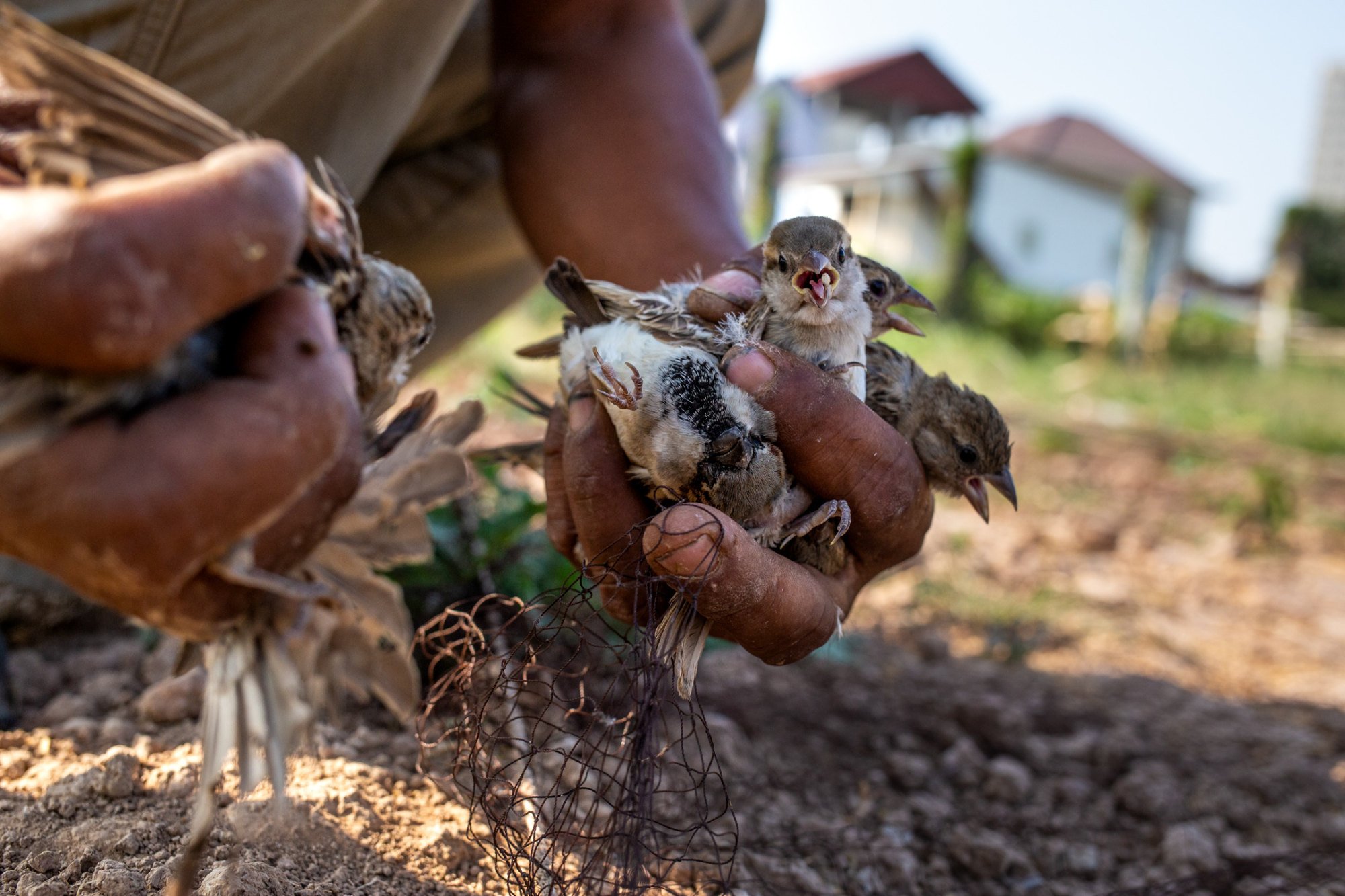
He says that over the week, his earnings average out to “US$50 to US$62.50 per day”.
If he worked as a driver for ride-hailing service PassApp, he says he could make US$15 a day after fuel, and “what can we do with US$15”, he asks. “After rice, water and children going to school, it won’t be enough.”
Yiey Mao (whose name has also been changed) lived on the street and collected recyclables before she began selling birds on Phnom Penh’s riverside, another popular release location.
On a typical day, the 62-year-old makes around US$10, roughly Cambodia’s minimum wage. But like Choeun Lien, the bulk of her income is tied to Uposatha days, when a pair of birds goes for US$2.50, twice what she buys them for. She says she can sell up to 100 pairs of birds on those days.
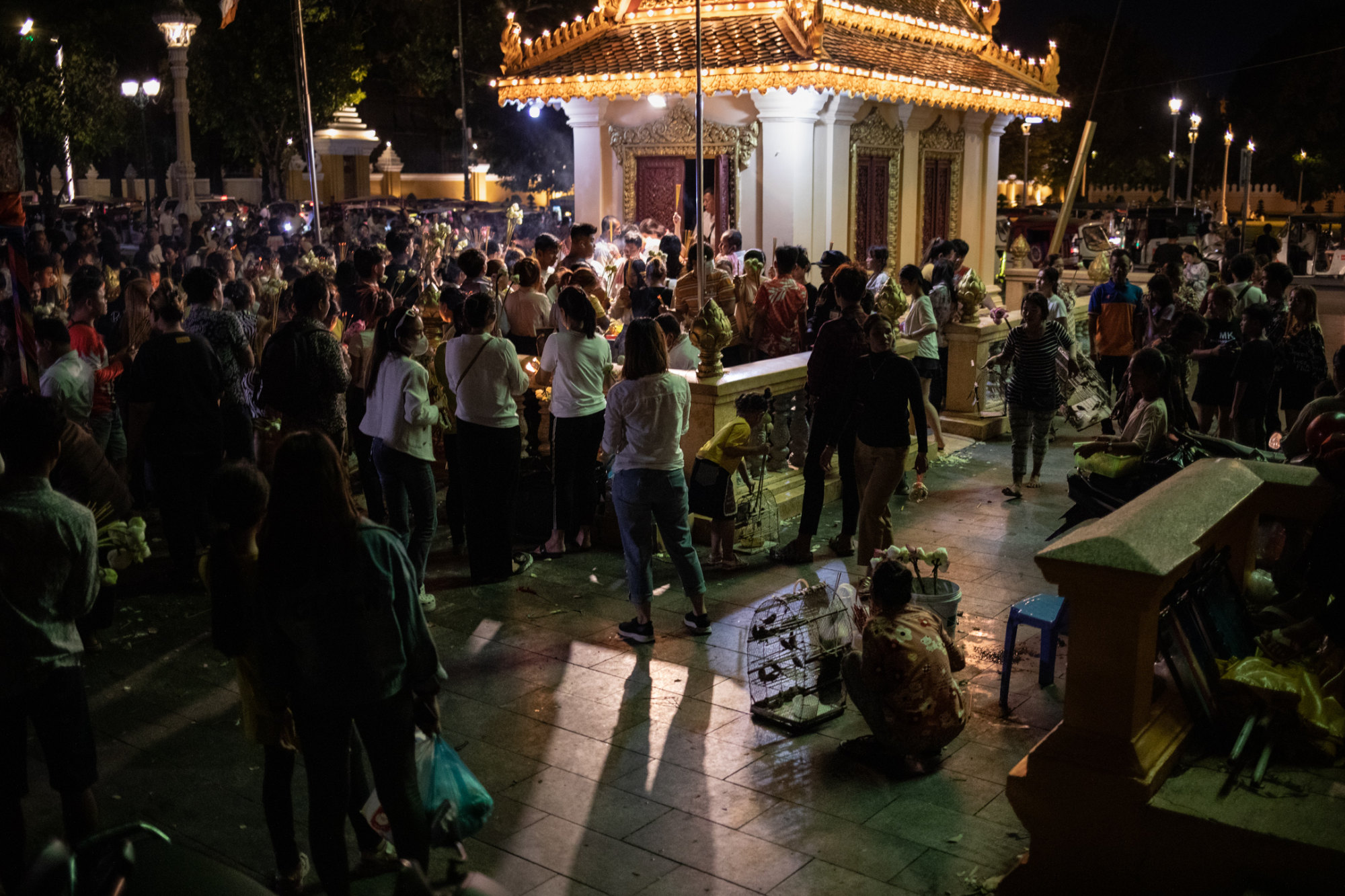
Sellers often point out that they take good care of the birds, providing food, clean cages and sometimes spraying them with water, but even then the birds are exposed to incessant noise and handling, sometimes until late in the evening.
Some cages are left without shade even in the midday heat and unsold birds are motored through traffic at the end of the day and then brought back in the morning.
One recent morning, during an argument with a buyer, a seller threw a cage full of birds to the ground. It’s no surprise, then, that birds on sale are often in poor condition, with many sick or injured.
Yiey Mao says she sees four to six birds die every day, and sellers hide the bodies to avoid deterring buyers.
None of this is better illustrated than during Vesak, the festival commemorating the birth, enlightenment and death of the Buddha, which typically falls on a full moon in early May: the most popular day in Cambodia for life release.
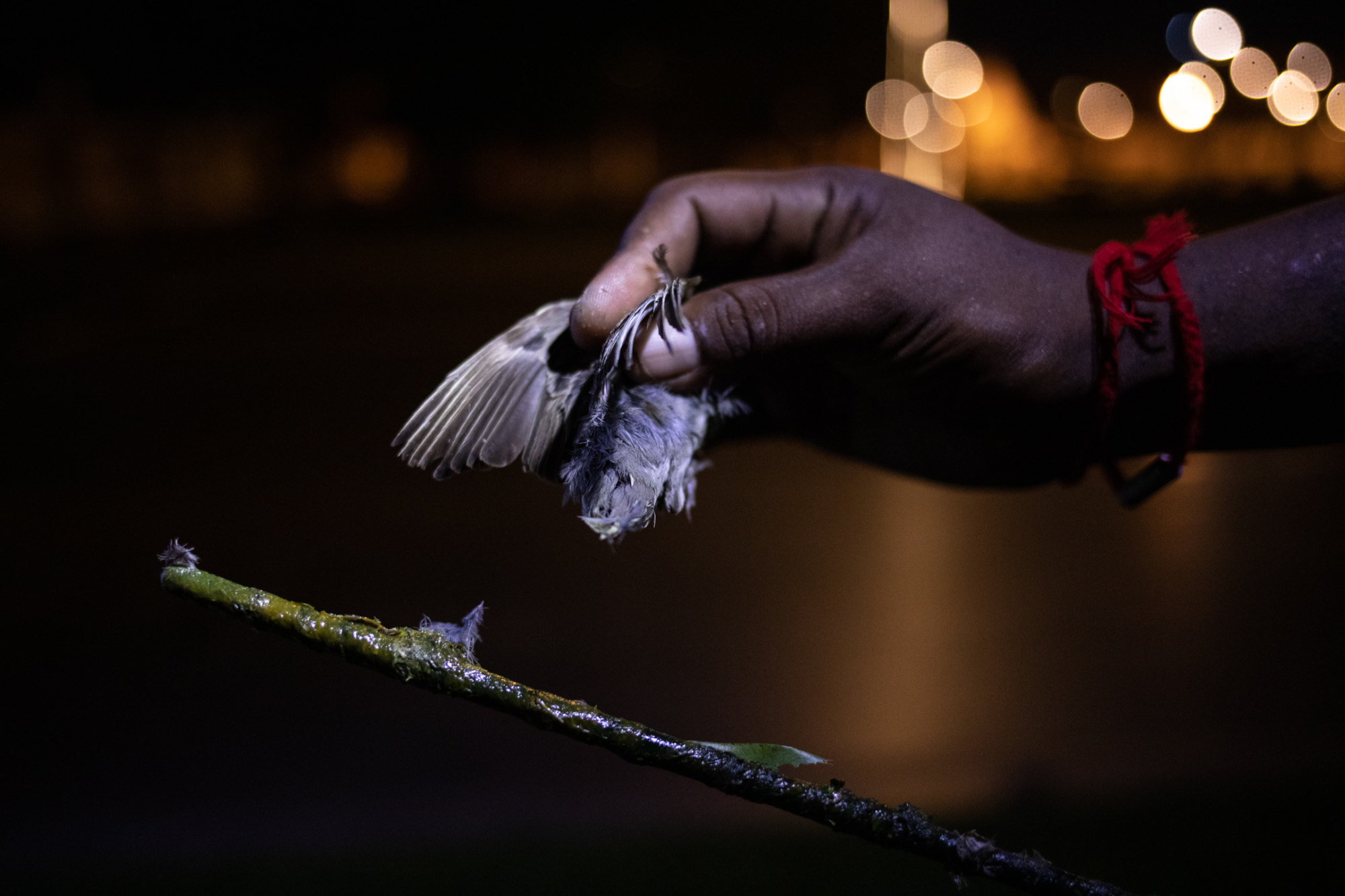
Believers flock to the Preah Ang Dorngkeu shrine, on the Mekong riverfront, where they buy and release vast numbers of birds over the evening. Tired from their time in the cage and unable to fly away, many of them just fall to the ground.
Using long sticks coated with glue, sellers re-catch and re-cage them, ready to sell on for another release. Hundreds, perhaps thousands of birds are worked to a slow, stressful death on that single evening.
Researchers in China have attempted to estimate how many birds survive after release and concluded the mortality rate is a minimum of 50 to 90 per cent.
Christel Griffioen, who runs the Angkor Centre for Conservation of Biodiversity (ACCB), a nature conservation and wildlife rescue centre near Siem Reap, wrote in an email “the majority of animals captured for prayer animal release die during transport or soon after release, the practice is disturbing the environment, doing more harm than good”.
Magellan estimates that at least 3 million birds are “freed” annually in Cambodia, with fish and turtles also popular life-release animals. In total, she says, “about 10 million animals are released in Cambodia every year. It’s a very conservative estimate, the real number is probably much higher”.

In Vietnam, where organised mass-release events are common, she found even higher numbers, more than 130 million animals a year, up to a third of which are birds. And these figures are just a fraction of the global tally: in Taiwan, a study from 2009 found people were collectively spending more than US$6 million to release 200 million animals every year.
Across Southeast Asia, ornithologists have witnessed the decline of several bird species caught for the practice.
In the mid-2000s, a year-long survey recorded Asian golden weavers – small finches remarkable for the males’ rich yellow plumage – being captured “so frequently that a considerable portion of the global population could conceivably be passing through the merit-release cages in Phnom Penh”.
Often nesting in conspicuous colonies in rice-producing areas, weavers did, and still do, provide an easy and bountiful catch to merit-bird trappers.
Frédéric Goes, ornithologist and author of The Birds of Cambodia: An Annotated Checklist (2014), found golden weavers in “substantial recent decline” and warned that “the merit-bird trade therefore constitutes a key threat to the species in Cambodia”.

In Siem Reap, Cambodia’s second-largest city, sellers offer a much wider range of animals than those in the capital.
One can buy back freedom for great mynahs, black-collared starlings, Mekong snail-eating turtles and even alien species: Chinese softshell turtles, massively farmed for meat; budgerigars and Barbary doves, bred in captivity for the pet trade.
Magellan expects the release of non-native species to increase in line with economic conditions. “When people have more money,” she says, “they will do more releases, but will also release more exotic species.”
Indeed, releasing a pair of budgies on Uposatha days costs US$20, 10 times the price of a pair of sparrows.

A bright dash of red on its head betrays it as a red-eared slider, a native of the Midwestern United States, and which, thanks to decades of exports by American farms, has become the world’s most popular pet turtle.
Readily available from pet shops, these terrapins have long been a favourite for religious release. Left to fend for themselves in a foreign environment, they have proved to be highly adaptable, even outcompeting local species.
In parts of Asia, where more than half of all turtle species are close to extinction, sliders have already become the most abundant freshwater turtle; so successful that they have been listed among the top 100 worst invasive species.
In Taiwan, where red-eared sliders have become the second-most abundant freshwater turtle, religious ceremony has been singled out as the main pathway of their introduction.
Back on Phnom Penh’s riverside, a woman passes a cage of oriental reed warblers and notices one of them is injured. Feeling pity for it, she pays the seller for a pair of birds. Turning towards the Mekong, she murmurs prayers for a few seconds, then, with a jerk, throws the birds up in the air.

“I was born in the Year of the Rabbit,” she says, “this year is a Year of the Rabbit, so it’s not good for me. I heard about the powerful statue of Preah Ang Dorngkeu here, so I wanted to release birds to fend off accidents and misfortune, and pray for prosperity.”
The Venerable Theum Thea, from Phnom Penh’s Wat Botum, belongs to a new generation of monks who take to social media to spread Buddhist teachings and, at times, raise awareness about environmental issues. Theum Thea has more than 350,000 followers on TikTok and Facebook.
“Some people want to release birds because they have a heart of being pitiful and compassionate towards the animals,” he says. “But another type, they buy birds to release for their own sake, for their own happiness, their own freedom.
“They believe that releasing animals like turtles and birds will make their life better, or for growing their business.” Or they “release birds just for the sake of a photo or video”.
Changes may be coming, but it’s a slow process.
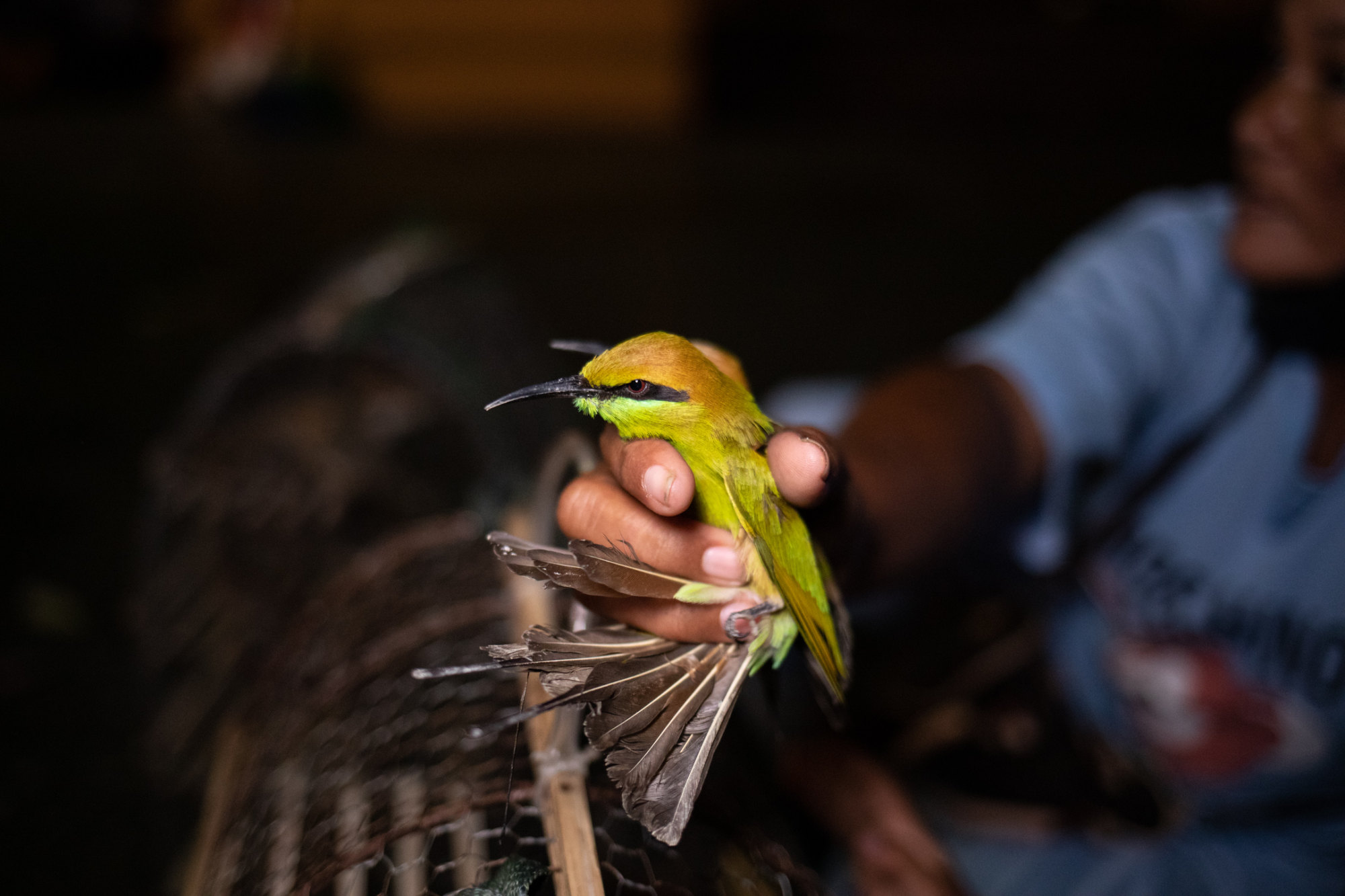
“The Buddhist monks who emphasise that prayer animal release is a traditional practice and not a religious practice indicate that such releases cannot be considered compassionate if they kill more animals than they help, and when it causes environmental damage,” says Griffioen.
ACCB, the wildlife conservation centre she heads, holds workshops with monastic communities to educate them about conservation issues, including life release.
“Buddhist communities around the world are advocating alternatives to releasing animals,” says Griffioen. “One example of a sustainable alternative for prayer animal release could be donating to conservation organisations to help them with their vital work.
“This would allow Buddhists who want to release animals to continue to be involved in the practice, but in a way that benefits Cambodia’s wildlife instead of putting it at risk.”

